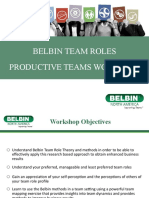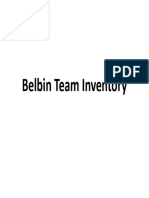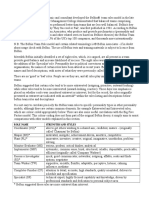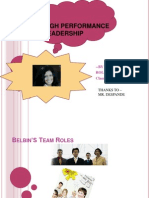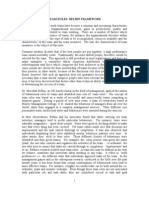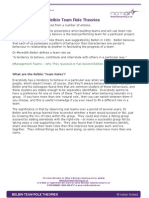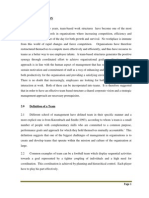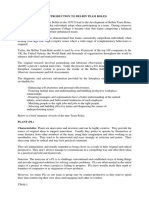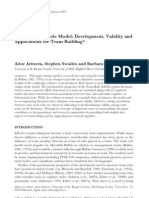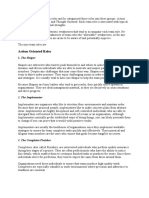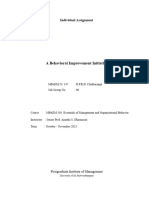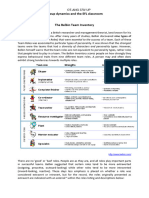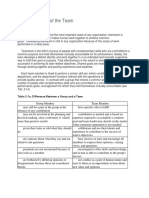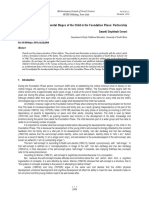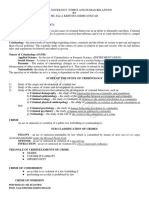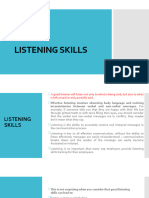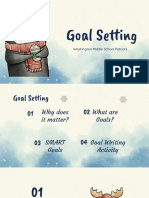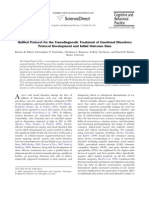What is a team role?
A team role as defined by Dr Meredith Belbin is:
"A tendency to behave, contribute and interrelate with others in a particular way."
Belbin team roles describe a pattern of behaviour that characterises one persons behaviour in relationship to another in facilitating the progress of a team. The value of Belbin team-role theory lies in enabling an individual or team to benefit from self-knowledge and adjust according to the demands being made by the e ternal situation.
How did the concept originate?
!uring a period of over nine years" #eredith Belbin and his team of researchers based at $enley #anagement %ollege" &ngland" studied the behaviour of managers from all over the world. #anagers taking part in the study were given a battery of psychometric tests and put into teams of varying composition" while they were engaged in a comple management e ercise. Their different core personality traits" intellectual styles and behaviours were assessed during the e ercise. As time progressed different clusters of behaviour were identified as underlying the success of the teams. These successful clusters of behaviour were then given names. $ence the emergence of nine team roles. These are: action oriented roles !haper, "mplementer, and #ompleter $inisher people oriented roles #o ordinator, %eamwor&er and 'esource "nvestigator cerebral roles (lant, Monitor )valuator
B)*B"+ %eam 'ole %ype
#ontributions
Allowable Wea&nesses
(*A+%
%reative" imaginative" .gnores incidentals. Too unorthodo ' di d(o" pre-occupied to kh)ng ch*nh th+ng,. communicate effectively. -olves difficult problems.
�#, ,'D"+A%,' M,+"%,' )-A*.A%,'
#ature" confident" a good chairperson. %an often be seen as %larifies goals" promotes manipulative. /ff loads decision-making" personal work. delegates well. -ober 'tinh tao," strategic and discerning ' sang 1acks drive and ability to su+t,. -ees all options. inspire others. 0udges accurately. !isciplined" reliable" conservative 'b2o th3" -omewhat infle ible. -low th4n tr5ng, and efficient. to respond to new Turns ideas into practical possibilities 'trien vong,. actions. 6ainstaking 'chiu kho," conscientious'chu dao," an ious. -earches out errors and omissions' thu bo sot,. !elivers on time. .nclined 'thien huong, to worry unduly '7ua muc,. 8eluctant 'ko san long, to delegate.
"M(*)M)+%)' #,M(*)%)' $"+"!H)'
& trovert" enthusiastic" /ver - optimistic. 1oses ')!,.'#) "+-)!%"/A%,' communicative. & plores interest once initial 'ban opportunities. !evelops dau, enthusiasm has contacts. passed. %hallenging 'k*ch 9:ng" k*ch th*ch," dynamic 6rone to provocation. 'd< b= 'n;ng 9)ng," thrives on khi>u kh*ch,. /ffends ' ?c pressure. The drive and ph@m, peopleAs feelings. courage to overcome obstacles. %o-operative" mild ')n hBa," perceptive' sCu sDc, and diplomatic 'kh)n khEo,. 1istens" builds" averts friction 'ng;n chFn *ch m*ch,.
!HA()' 0ng12i th3o &4 ho5ch6
.ndecisive 'lGHng lI, in crunch situations.
%)AMW,'7)'
8esults from this research showed that there are a finite number of behaviours or %)AM ',*)! which comprise certain patterns of behaviour which can be adopted naturally by the various personality types found among people at work. %he accurate delineation o8 these %)AM ',*)! is critical in understanding the dynamics o8 any management or wor& team.
�What can be gained by identi8ying people9s %eam 'oles?
.t is difficult to work effectively with people without some reasonable e pectations of how they are going to perform. -elf and /bserver Assessments show how an individual feels and how an individual behaves in a group.
Why use ,bserver Assessment?
/bserver Assessments provide independent evidence about an individuals team roles. A !el8 (erception test is only as good as an individuals sense of personal realism. -ome people answer in terms of how they would like to contribute rather than how they really behave.
#an " change %eam 'oles?
Team roles develop and mature. These may change with e perience and conscious attention. !ifferent team roles may come to the fore in response to the needs of particular situations.
!hall " let people &now my pre8erred %eam 'oles?
The sharing of team roles increases understanding and enables mutual e pectations to be met. !isappointments will then be less likely.
What is an Allowable Wea&ness?
-ometimes strength in one role has to be bought at the cost of what might be seen as a weakness in another conte t. Jor e ample" a person whose preferred team role is Monitor )valuator is likely to be objective" impartial and good at carefully weighing up all possibilities to make the right decision. Ket someone with these strengths may well come across as being unenthusiastic or even boring. Any failure to inspire is apt to obscure the true strengths of a Monitor )valuator. That weakness can be reckoned the price that necessarily has to be paid for the strength and in this sense it is termed Allowable.
What is a %eam 'ole !acri8ice?
.n some circumstances an individual will need to forego using hisLher leading or preferred team role and adopt another in its place. This shift may be rendered necessary due to the lack of a good e ample of a desired role within the team or because another person is already contributing on common preferred ground. -uch a shift from preferred behaviour is known as Mmaking a teamrole sacrificeM.
When " &now my strongest %eam 'oles, what shall " do about it?
A persons overall strongest roles are the ones most appreciated by other people. !evelop and play these roles with enthusiasm" because this is where you are likely to make a mark. At the same time note of your lowest roles and find a strategy to avoid e posure by trying to play them. -o try to work with people who are strong in the roles in which you are weak.
What about the reliability and validity o8 "+%)'(*A#) :?
8eliability and validity are concepts commonly used in evaluating 6sychometric Tests. 8eliability is a measure of the internal consistency of a test" while validity relates to whether a test measures what it purports to measure. .nternal consistency is highest where test items are repeated" but this narrows their focus. 8ather than repeating 7uestions" or dealing with items that are virtually identical" "+%)'(*A#)N seeks to find clusters of useful forms of related behaviour. Jor e ample" the -haper cluster refers to an individual who is challenging" competitive" hard driving" tough and outspoken. $owever" that does not mean that everyone who is competitive happens to be outspoken.
�#ost 6sychometric tests rely on self-reporting. But here the behaviour assumed may not correspond with what others observe. The strength of "+%)'(*A#)N lies in its emphasis on validity" for its counselling outputs are designed to take account of a consensus on observed behaviour. This can be made evident by looking at how far the /bservers agree with each other. Jormal correlations are" however" difficult to calculate as /bservers are not re7uired to make any fi ed number of responses. Oenuine responses are more easily obtained" and are more valuable" when forced choices are avoided. !ifferences in perception between the self and others provide valuable leads for action. The demands of jobs also have to be taken into account when assessing validity since the many varied forms of behaviour can be seen as effective or ineffective according to the conte t. $ere the fit between the profile of the individual and the profile of the job plays a key consideration.
Papis Para atingir a o objetivo proposto, so necessrios alguns papis, ressaltando-se que no existe a necessidade de uma pessoa para cada papel. A seguir, sero descritos os papis necessrios e suas contribuies para a consecuo do resultado esperado, baseados no trabal o de !elbin "#$$%&' Plant ( ) exatamente o criador da idia inicial, e*iciente em en*rentar problemas complexos. +uas solues devem ser cuidadosamente analisadas e complementadas para torn-las viveis de aplicao, j que ele se preocupa com questes mais globais e no se atm a detal es. ,aracter-sticas' .novador, criativo e con*uso/ Resource Investigator ( ) o membro que abre os ori0ontes do grupo, que ol a para *ora e tra0 as idias e in*ormaes para o trabal o interno. 1o possui a originalidade do Plant, mas e*ica0 em perceber a relev2ncia de novas idias, o que pode se tradu0ir tambm em *onte de inovao. ,aracter-sticas' 3xtrovertido, entusistico e investigador/ Co-ordenator ( 1o necessariamente o mais bril ante e criativo do grupo, porm, e*iciente em coorden-lo e tomar decises. ,aracter-sticas' 4aduro, con*iante e equilibrado/ Shaper ( 5ireciona os es*oros do grupo e os *oca em direo aos objetivos do trabal o. ,aracter-sticas' 6ocado em resultados, din2mico e desa*iador/ Implementer ( 7ra0 os conceitos e decises para a prtica. +egundo !elbin, considera este componente comum a todas as equipes de sucesso, porm, equipes *ormadas somente com este per*il de personalidade possuem resultados insatis*at8rios em termos de idias. ,aracter-sticas' 5isciplinado, con*ivel e e*iciente/ Team Worker ( ) o mais comunicativo e um bom aliado para de*ender novas idias, alm de redu0ir o atrito do grupo e estimular o esp-rito de equipe. ,aracter-sticas' +imptico, perceptivo e conciliador/ Completer / Finisher ( Possui a *uno de no deixar passar detal es e ainda, de criar um sentido de urg9ncia. ,aracter-sticas' ,uidadoso, minucioso.


